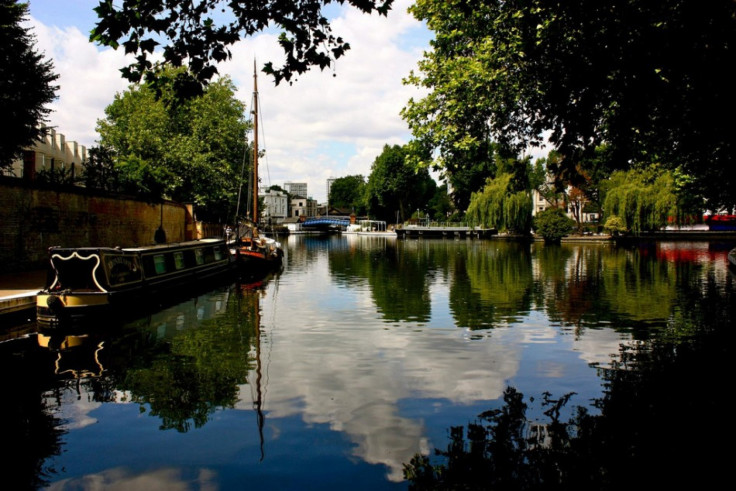Beyond The Olympics: Exploring London’s Lesser-Known Attractions

So you've been to London before. You've zipped through the Houses of Parliament, crossed Tower Bridge, messed with the guards at Buckingham Palace and fed the pigeons in Trafalgar Square. You've spent hours delving into the past at the British Museum and the V&A and been shocked back into the present at the Tate Modern. You've even forked over £37 ($58) to view the city from the London Eye. You've ticked everything off the must-see list. That's great. But here's another list for you to tackle: 10 of London's unsung attractions.
Little Venice
When poet Robert Browning coined the term "Little Venice" in the 19th century, he was describing the point where the Paddington Arm of the Grand Union Canal meets the Regents Canal. Now, however, it refers to the whole area at the south of Maida Vale. This tranquil pocket of London is the perfect escape for an early morning stroll or a lazy afternoon meal by the picturesque canals watching the colorful Narrowboat cruises travel to Camden Lock.
How to get there: Take the tube to Warwick Avenue.
Chiswick House & Gardens
This quintessential British garden is the birthplace of the English Landscape Movement and has inspired countless other gardens around the world. At its center is a magnificent neo-Palladian villa built by the third Earl of Burlington in 1729 to show off his art collection. After a £12.1 million restoration project in 2010 (which included one of the most ambitious garden regeneration projects ever undertaken), the grounds now boast a cafe, play area and miles of winding paths.
How to get there: Take the tube to Turnham Green, and walk south for 10 minutes toward the Thames. (http://www.chgt.org.uk/)
St. Katherine Docks
St. Katherine Docks is easily one of Central London's best kept secrets, and many tramp right past it en route to the Tower of London. The docks of the capital's main marina are built on a site with more than 1,000 years of dramatic history and today house fantastic waterside restaurants, shops and cafes. Sitting in the shadow of Tower Bridge, this oasis is a haven of tranquility for luxury yacht owners, locals and tourists alike.
How to get there: Take the tube to Tower Hill, and walk five minutes. (http://www.skdocks.co.uk/)
Temple Church
You might recognize this 12th-century church, built by the Knights Templar, from Dan Brown's popular novel, "The Da Vinci Code," and its film adaptation. One of the hoariest and holiest of Britain's medieval treasures, the church was made to resemble Jerusalem's Church of the Holy Sepulchre and is notable for its circular nave and effigy tombs.
How to get there: Take the tube to Temple or Blackfriars, and walk away from the Thames.
Grays Antiques Market
Specializing in everything from Bakelite homeware to Mughal art (and with more than a sprinkle of London history), Grays Antiques Market is the epicenter of London's bustling antiques trade. Even if you have no intentions of purchasing a "treasure from Africa," window-shopping at Grays is a fascinating experience.
How to get there: Take the tube to Bond Street (www.graysantiques.com/)
Dulwich Picture Gallery
Though it was England's first purpose-built public art gallery, designed by Regency architect Sir John Soane in 1817, this South London gallery is often overlooked in favor of London's more popular rivals (the National Gallery, Tate and V&A, for example). In addition to an outstanding collection of around 300 17th- and 18th-century old master paintings by the likes of Rembrandt, Rubens and Van Dyck, the Dulwich mounts a series of high-profile international loan exhibitions throughout the year.
How to get there: Take the tube to Brixton, and hop on the P4 bus for 10 minutes. (http://www.dulwichpicturegallery.org.uk)
Primrose Hill
Every city has its scenic overlook, and for London, it's Primrose Hill. Jutting out from the north side of Regent's Park, the hill has an unobstructed view of central London and a carpet of grass just begging for a picnic. Down below, Queen Mary's Gardens in Regent's Park is one of the city's (and, indeed, the world's) finest floral displays.
How to get there: Take the tube to Chalk Farm, and walk 10 minutes toward Regents Park. (http://www.royalparks.org.uk/parks/the-regents-park/)
London Wetland Centre
Who knew London had wetlands? The Wetland Centre, which covers more than 100 acres of land formerly occupied by several small reservoirs, is home to a cornucopia of fowl, including sparrowhawks, ring-necked parakeets and great crested grebes, as well as bats. Nature walks, the indoor Discovery Centre and a play area make it a great spot to bring the kids on a sunny day.
How to get there: Take the tube to Hammersmith, and catch the 283 bus to the Centre. (http://www.wwt.org.uk/)
Highgate Cemetery
A cemetery may not be the first thing on your list when you head to a destination, but London's Highgate is really more of a dramatic, overdecorated garden. More than any other cemetery in Britain, it reflects the romanticized and ritualized views on death and dying in the Victorian era where cemeteries became lush, decorative "cities of the dead." While this maze of tombs and trees houses many famous mortals, most come to see the tomb of Karl Marx.
How to get there: Take the tube to Archway, and walk up Highgate Hill.
Ridley Road Market
Most head to the famous markets at Camden and Portobello Road, but if you want a taste of London's vibrant ethnic communities, check out Ridley Road. What began with a small stall of about 20 vendors in the 1880s is now a thriving market of nearly 200, featuring a range of goods from Asia, Africa, the Caribbean and the Mediterranean. Of all the attractions on this list, Ridley Road Market is certainly the noisiest, liveliest and most exotic.
How to get there: Take the North London Line to the Dalston Kingsland railway station, and walk five minutes east on Ridley Road.
© Copyright IBTimes 2024. All rights reserved.






















